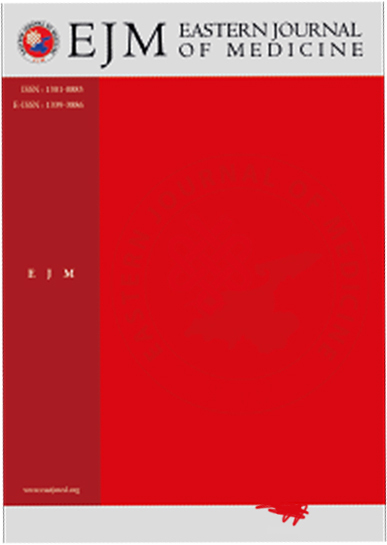Neuroendocrine Tumours Detected After Appendectomy: 5-Year Single Center Experience with 4888 Acute Appendicitis Patients
Ahmet Başkent, Murat Alkan, Ecem Memişoğlu, Okan OkDepartment of General Surgery, Kartal Dr Lütfi Kırdar City Hospital, İstanbul, TurkeyINTRODUCTION: This study is aimed to retrospectively examine the demographic characteristics, surgical procedure, histopathological results and survival of patients who underwent appendectomy with the diagnosis of acute appendicitis and were diagnosed histopathologically with neuroendocrine tumors of the appendix (ANET).
METHODS: A retrospective study was performed in patients undergoing surgery for acute appendicitis between January 2015 and December 2020. Demographic characteristics of the patients, tumor diameter, tumor grade, invasion, surgical margin, TNM stage, postoperative follow-up and survival time were obtained from the hospital database. In addition, the expression of synaptophysin, chromogranin-A, Ki-67, CD56 tumor markers and mitotic index of the cases were assessed from the pathology reports.
RESULTS: In the histopathological examination of 4888 appendectomy specimens, ANET was detected incidentally in 31 cases (0.63%). The median age in these cases was 33 years and the women/men ratio was 1.6. Twenty seven (87.1) cases were found to be Grade 1, 3 (9.8%) Grade 2 and 1 (3.2%) Grade 3. Only appendectomy was performed in 26 (83.8%) of the patients, and complementary right hemicolectomy (RH) was performed in 5 (16.2%) patients with Grade 2. Residual tumor was seen in only 1 (Grade 3) of the cases who underwent RH. No recurrence was detected in any of the cases.
DISCUSSION AND CONCLUSION: ANETs are very rare and are usually detected incidentally in pathological examinations after appendectomy. Therefore, routine appendectomy specimens should be carefully examined to determine the diagnosis. ANETs are a disease with a very good life expectancy and prognosis. Complementary right hemicolectomy should be recommended in advanced ANETs.
Keywords: appendectomy, appendiceal neuroendocrine tumours, appendix
Manuscript Language: English














